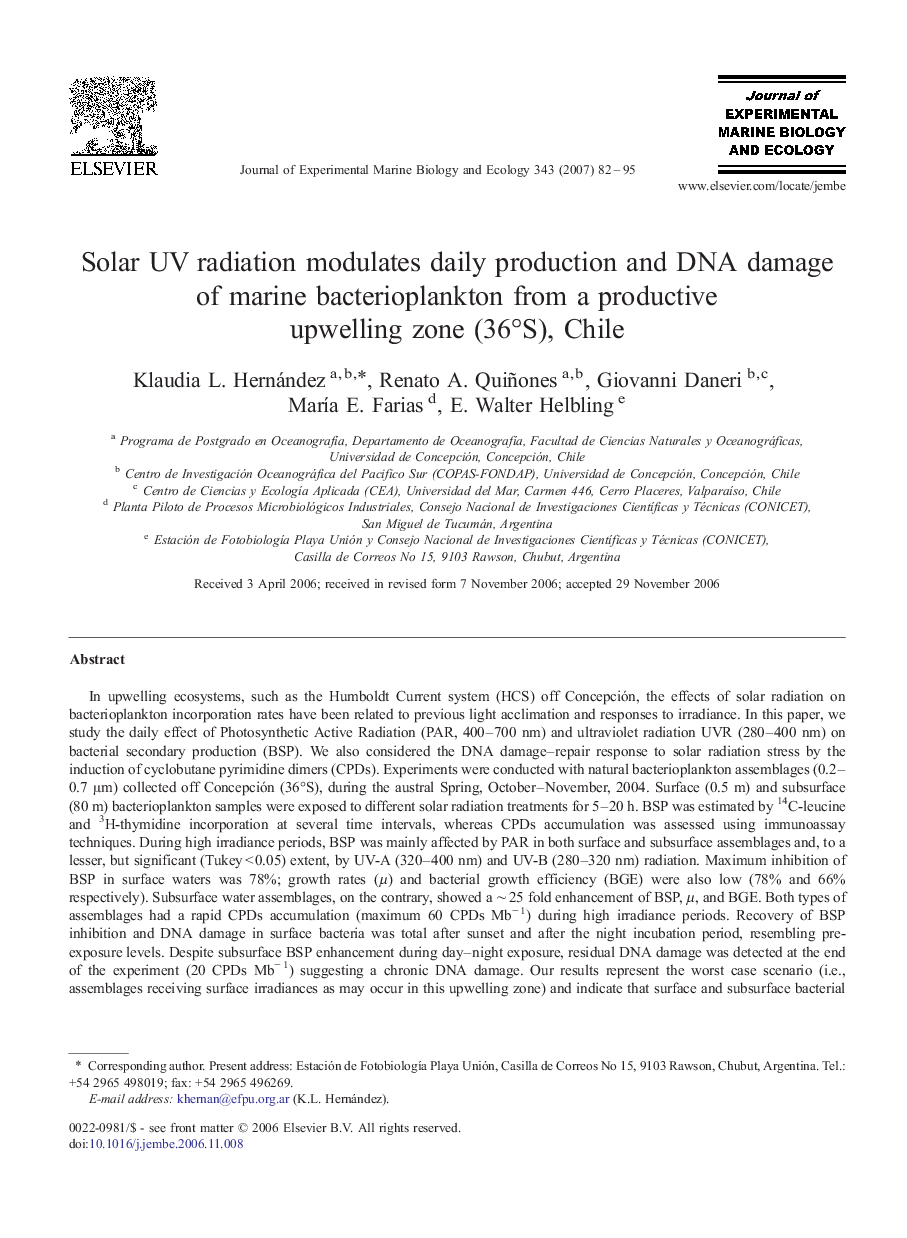| کد مقاله | کد نشریه | سال انتشار | مقاله انگلیسی | نسخه تمام متن |
|---|---|---|---|---|
| 4397858 | 1305910 | 2007 | 14 صفحه PDF | دانلود رایگان |

In upwelling ecosystems, such as the Humboldt Current system (HCS) off Concepción, the effects of solar radiation on bacterioplankton incorporation rates have been related to previous light acclimation and responses to irradiance. In this paper, we study the daily effect of Photosynthetic Active Radiation (PAR, 400–700 nm) and ultraviolet radiation UVR (280–400 nm) on bacterial secondary production (BSP). We also considered the DNA damage–repair response to solar radiation stress by the induction of cyclobutane pyrimidine dimers (CPDs). Experiments were conducted with natural bacterioplankton assemblages (0.2–0.7 μm) collected off Concepción (36°S), during the austral Spring, October–November, 2004. Surface (0.5 m) and subsurface (80 m) bacterioplankton samples were exposed to different solar radiation treatments for 5–20 h. BSP was estimated by 14C-leucine and 3H-thymidine incorporation at several time intervals, whereas CPDs accumulation was assessed using immunoassay techniques. During high irradiance periods, BSP was mainly affected by PAR in both surface and subsurface assemblages and, to a lesser, but significant (Tukey < 0.05) extent, by UV-A (320–400 nm) and UV-B (280–320 nm) radiation. Maximum inhibition of BSP in surface waters was 78%; growth rates (μ) and bacterial growth efficiency (BGE) were also low (78% and 66% respectively). Subsurface water assemblages, on the contrary, showed a ∼ 25 fold enhancement of BSP, μ, and BGE. Both types of assemblages had a rapid CPDs accumulation (maximum 60 CPDs Mb− 1) during high irradiance periods. Recovery of BSP inhibition and DNA damage in surface bacteria was total after sunset and after the night incubation period, resembling pre-exposure levels. Despite subsurface BSP enhancement during day–night exposure, residual DNA damage was detected at the end of the experiment (20 CPDs Mb− 1) suggesting a chronic DNA damage. Our results represent the worst case scenario (i.e., assemblages receiving surface irradiances as may occur in this upwelling zone) and indicate that surface and subsurface bacterial assemblages in the HCS are both highly sensitive to solar irradiance. However, they showed different responses, with surface bacteria having more effective photorepair mechanisms, and sustaining higher BSP than subsurface assemblages.
Journal: Journal of Experimental Marine Biology and Ecology - Volume 343, Issue 1, 30 April 2007, Pages 82–95